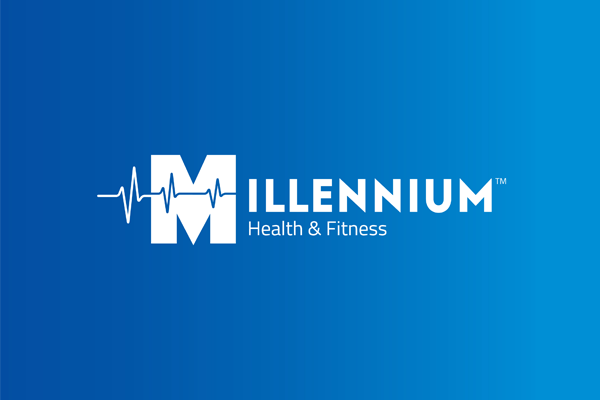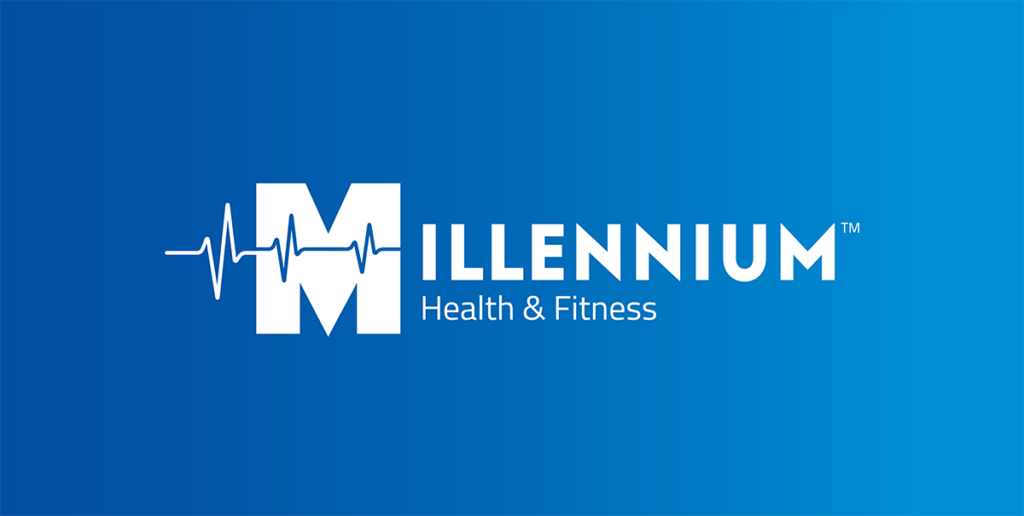 In the hustle and bustle of today’s fast-paced world, finding time for self-reflection can be challenging but is essential for personal growth and well-being. Prioritizing self-reflection offers numerous benefits including reducing stress, bettering connection in relationships, and enhancing general well-being.
In the hustle and bustle of today’s fast-paced world, finding time for self-reflection can be challenging but is essential for personal growth and well-being. Prioritizing self-reflection offers numerous benefits including reducing stress, bettering connection in relationships, and enhancing general well-being.
To incorporate more self-reflection into your routine, consider allocating dedicated time for introspection, whether it’s through journaling, meditation, or simply quiet contemplation. These practices can have a profound impact on your personal and emotional growth.
What is Self-Reflection?
Self-reflection is a process of purposeful self-analysis and examination of one’s thoughts, emotions, behaviors, values, motivations, and overall character. It involves taking a step back to explore various aspects of oneself consciously and thoughtfully, seeking to understand the “why” behind one’s actions and perspectives.
Self-reflection is a dynamic and ongoing process that can take various forms, such as journaling, meditation, deep contemplation, or engaging in conversations with others. It plays a crucial role in personal development, fostering self-awareness, and contributing to positive growth and change.
Why Is It Important to Self-Reflect?
Self-reflection is crucial for several reasons, contributing significantly to personal development and a well-rounded self-concept.
Self-reflection plays a pivotal role in shaping your self-concept, which encompasses your thoughts about traits, abilities, beliefs, values, roles, and relationships. This self-concept significantly influences your mood, judgment, and behaviors. It allows you the opportunity to assess your strengths and weaknesses and identify areas for growth. This awareness empowers you to actively address and enhance these aspects, fostering personal development.
Additionally, self-reflection serves as a valuable tool for extracting lessons from both positive and negative experiences. For instance, following an unsuccessful presentation, reflecting on the event can unveil areas requiring improvement, such as the significance of honing presentation delivery through practice. During challenging circumstances, such as a breakup, it becomes instrumental in taking responsibility for your actions and behaviors. This process enables the recognition of your role in the outcome, promoting mindfulness and personal accountability.
By engaging in self-reflection, individuals can navigate the complexities of personal growth, gain insights into their behaviors, and make informed choices that contribute to a more fulfilling and meaningful life.
Tips to Practice More Self-Reflection
- Pose questions to prompt thoughtful reflection. Develop a set of pre-planned questions to establish a personalized routine for self-reflection, whether integrated daily, weekly, or monthly tailored to your preferences and schedule. To kickstart this process, explore a comprehensive list of over 80 questions designed to deepen your self-understanding. Taking intentional time to reflect on these questions can significantly contribute to your self-awareness journey.
- Utilize Journaling. Journaling proves to be an excellent method for expressing your thoughts and emotions. It serves as a valuable tool for future reflection, allowing you to observe patterns and changes in your thoughts over time.If you encounter difficulties initiating this practice or find yourself unsure of what to write, various resources can assist you. Consider exploring online diary apps or opting for a traditional print journal as tools for self-discovery and reflection.
- Distinguish Between Self-Reflection and Contemplation. While self-reflection is intended to be constructive and advantageous, there are instances when reflection can transition into worry, negativity, and contemplation.Being able to discern between constructive self-reflection and contemplation is crucial to maximize the benefits of your reflections. Reflective thoughts are characterized by curiosity but maintain a neutral or factual tone. If you notice yourself veering into contemplation rather than genuine reflection, consider taking a break and revisiting the process at a later time.
- Allocate Time for Reflection. Prioritize self-reflection by deliberately setting aside dedicated time for it! Amid the busyness of life—filled with constant phone notifications, binge-worthy shows, social obligations, and work—it’s easy to neglect this valuable practice.Without intentionally carving out time for self-reflection, you may find it challenging to experience its full benefits. Begin with smaller increments, attempting weekly or biweekly sessions, and gradually progress to daily reflections as you build the habit.
Reference:
- Gupta, S. (2023, May 26). How self-reflection can improve your mental health. Verywell Mind. https://www.verywellmind.com/self-reflection-importance-benefits-and-strategies-7500858
- Jessie. (2023, April 22). 5 strategies to practice self-reflection (and why it matters). Tracking Happiness. https://www.trackinghappiness.com/how-to-self-reflect/
- Mayo Foundation for Medical Education and Research. (2023, November 21). How to stop negative self-talk. Mayo Clinic. https://www.mayoclinic.org/healthy-lifestyle/stress-management/in-depth/positive-thinking/art-20043950



 Meditation can be a valuable practice for alleviating anxiety, tension, and worry, helping restore a sense of calm and inner peace.
Meditation can be a valuable practice for alleviating anxiety, tension, and worry, helping restore a sense of calm and inner peace.

 Sierra Rankin, MS, Millennium
Sierra Rankin, MS, Millennium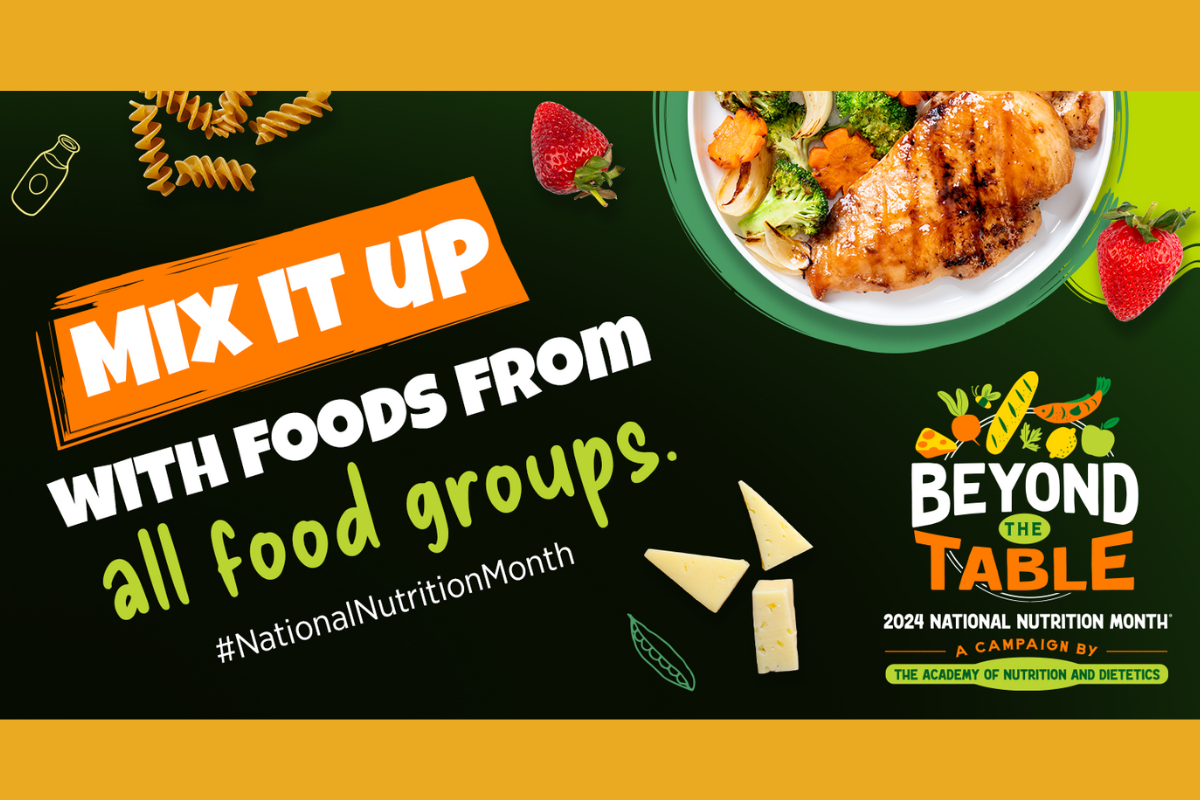
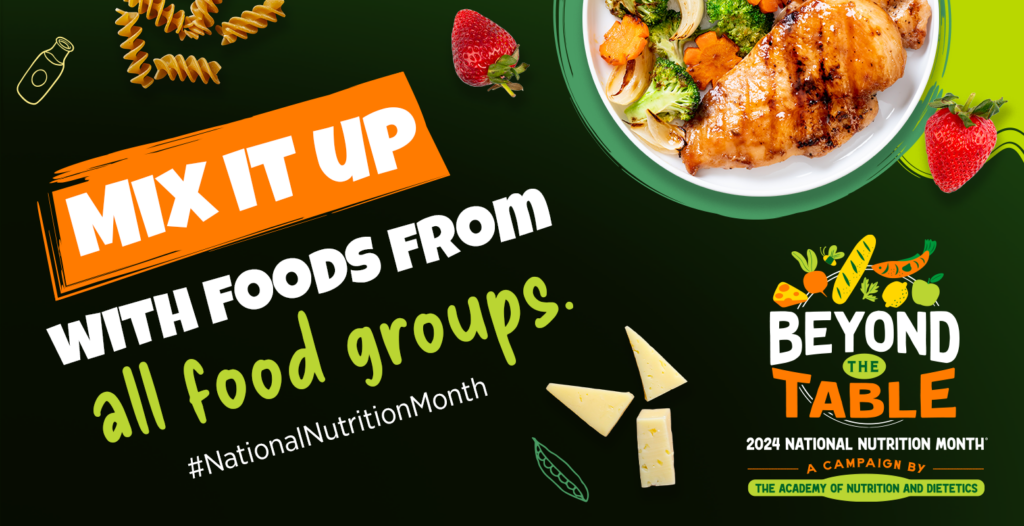 Sierra Rankin, MS, Millennium Associate Operations Manager
Sierra Rankin, MS, Millennium Associate Operations Manager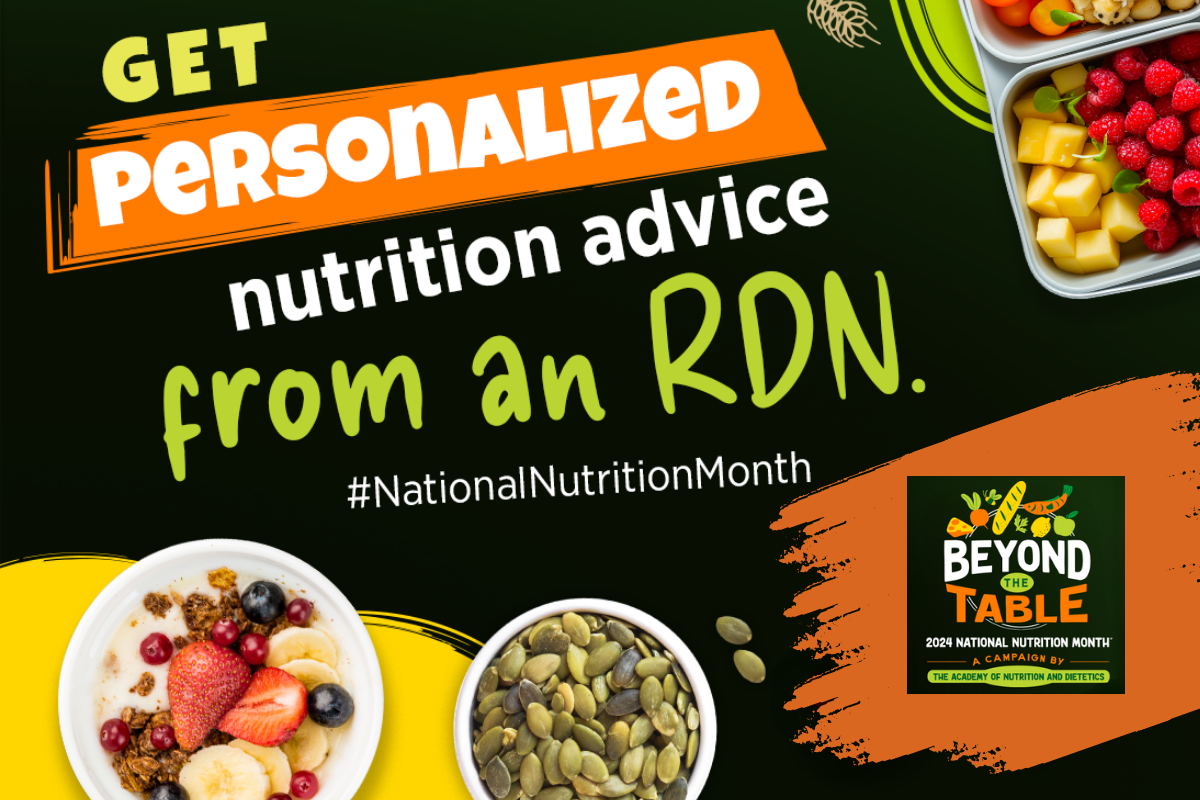
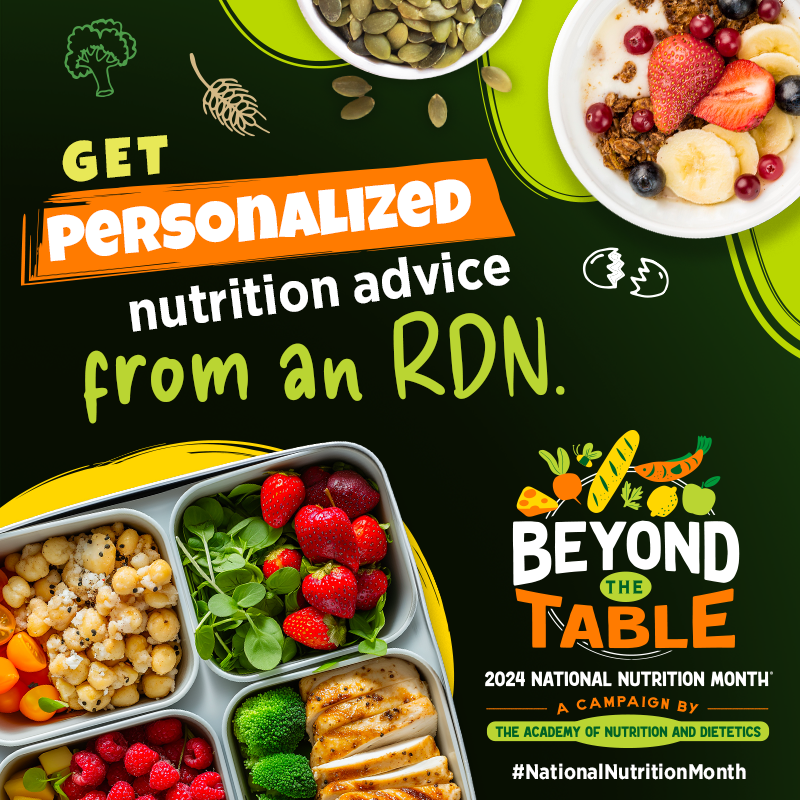 Sierra Rankin, MS, Millennium Associate Operations Manager
Sierra Rankin, MS, Millennium Associate Operations Manager 
 March is not only a time for blooming flowers and warmer weather but also a month dedicated to promoting healthy eating habits and nutrition education. National Nutrition Month®, created by the Academy of Nutrition and Dietetics, is an annual campaign aimed at raising awareness about the importance of making informed food choices and developing healthful eating and physical activity habits. In this blog, we’ll explore the significance of National Nutrition Month® and share practical tips for fueling your body and nourishing your soul.
March is not only a time for blooming flowers and warmer weather but also a month dedicated to promoting healthy eating habits and nutrition education. National Nutrition Month®, created by the Academy of Nutrition and Dietetics, is an annual campaign aimed at raising awareness about the importance of making informed food choices and developing healthful eating and physical activity habits. In this blog, we’ll explore the significance of National Nutrition Month® and share practical tips for fueling your body and nourishing your soul.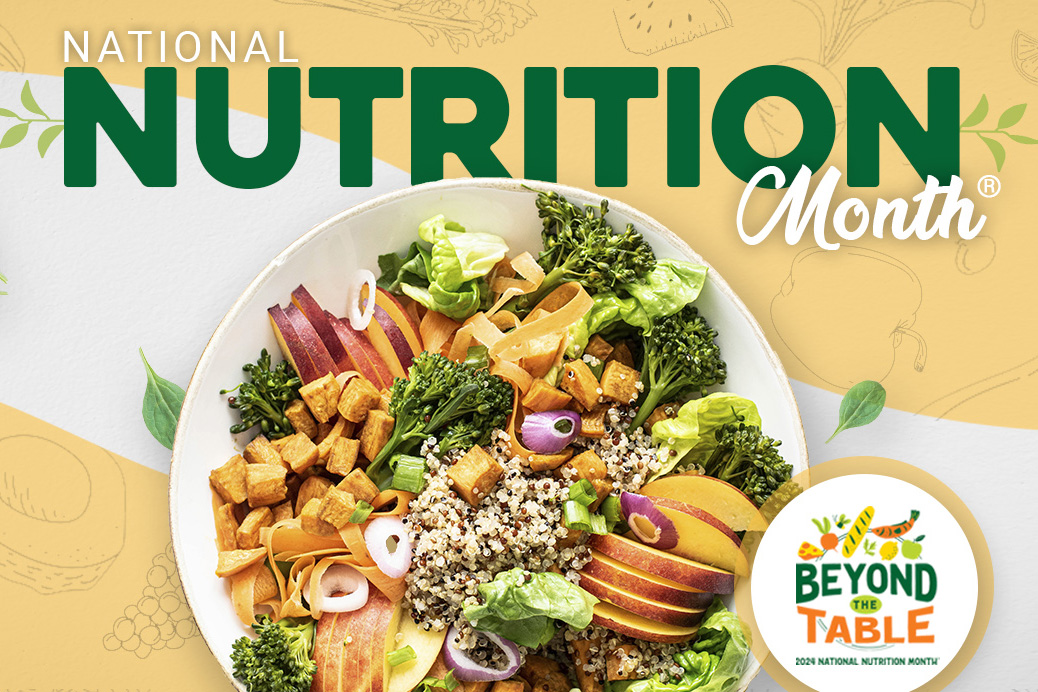
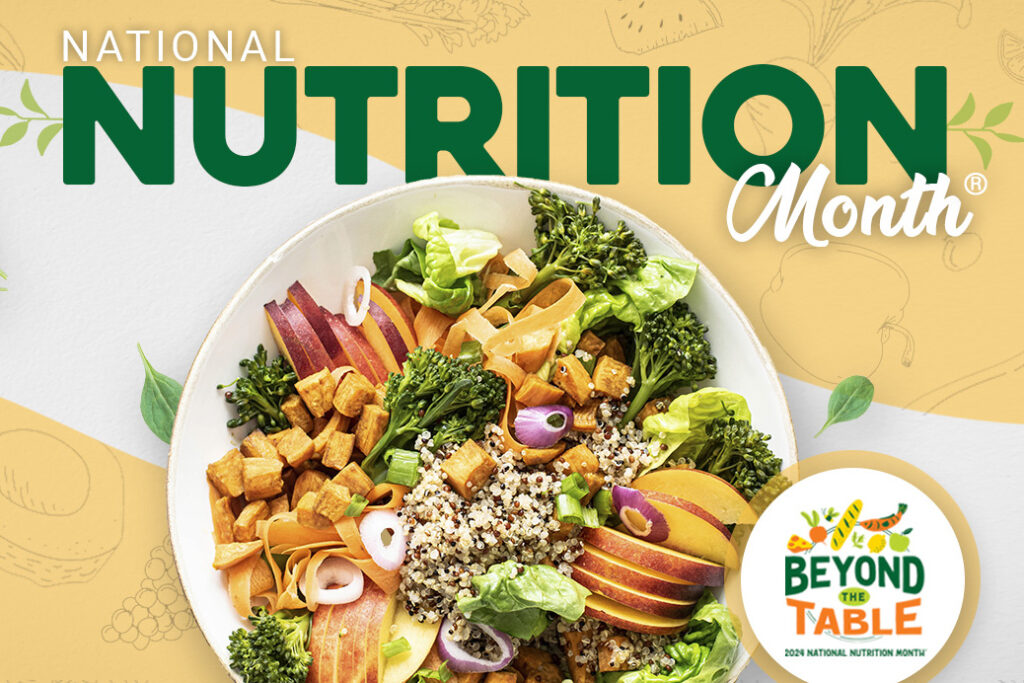
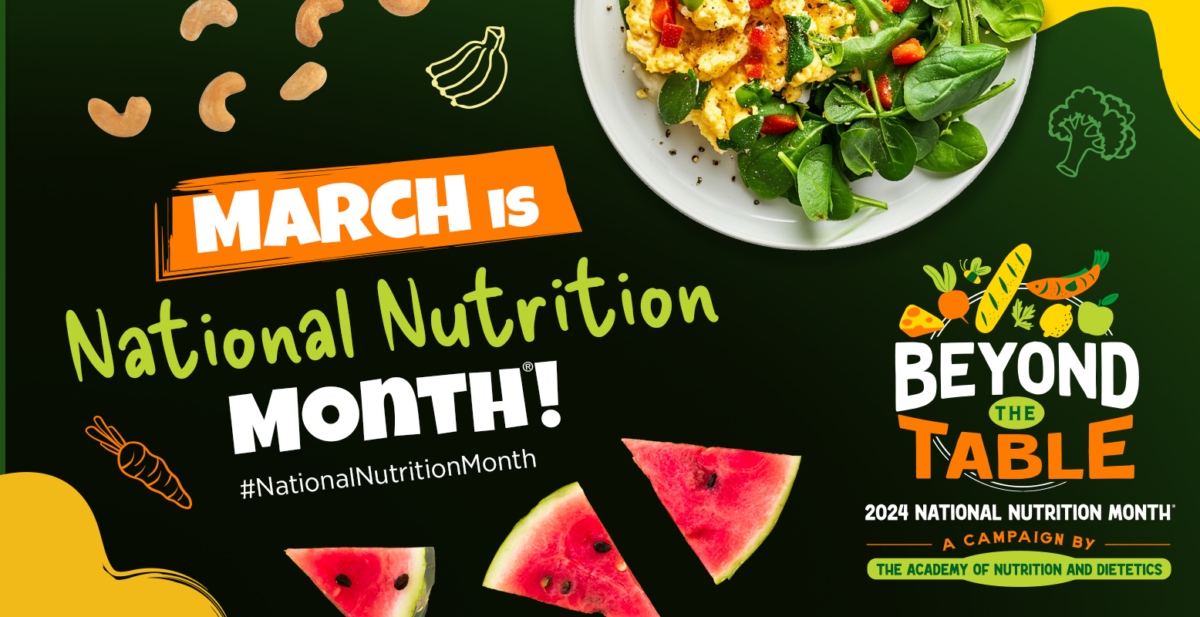
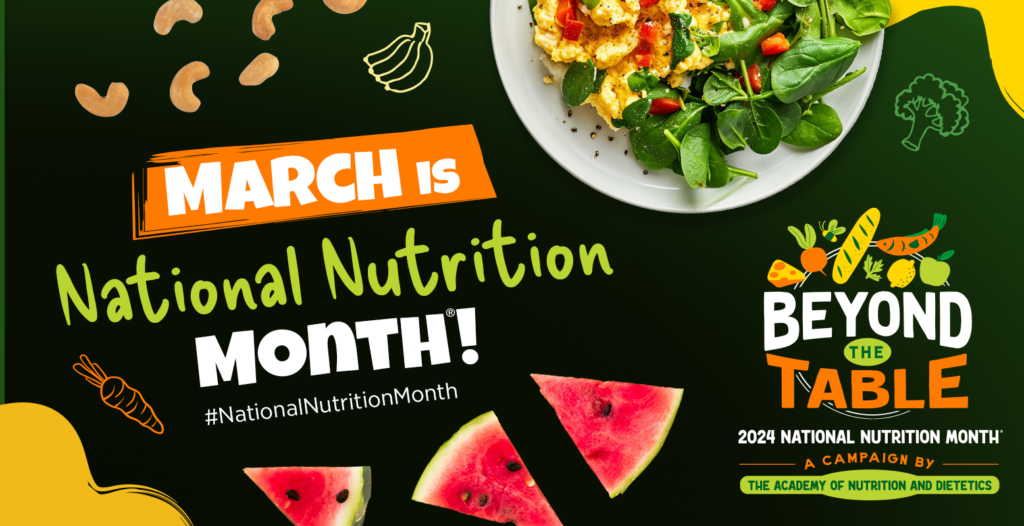 March brings more than just the promise of spring; it’s also the time for National Nutrition Month®, an annual campaign spearheaded by the Academy of Nutrition and Dietetics. This month-long observance, which began as National Nutrition Week in 1973 and expanded to a month in 1980 due to growing interest in nutrition, invites everyone to learn about making informed food choices and developing healthful eating and physical activity habits. The theme for 2024, “Beyond the Table,” invites us to explore the journey of our food from its source to our plates, emphasizing the importance of making informed choices and developing sound eating and physical activity habits.
March brings more than just the promise of spring; it’s also the time for National Nutrition Month®, an annual campaign spearheaded by the Academy of Nutrition and Dietetics. This month-long observance, which began as National Nutrition Week in 1973 and expanded to a month in 1980 due to growing interest in nutrition, invites everyone to learn about making informed food choices and developing healthful eating and physical activity habits. The theme for 2024, “Beyond the Table,” invites us to explore the journey of our food from its source to our plates, emphasizing the importance of making informed choices and developing sound eating and physical activity habits.